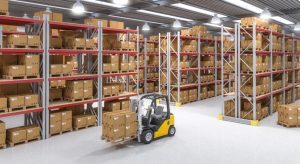Launching an e-commerce business is an exciting milestone, but as your sales grow, so does your need for storage. Signing a warehouse lease can feel like the only option, but it’s a big commitment that can drain funds if sales fluctuate.
Fortunately, there are flexible storage solutions to help you scale inventory without locking into a costly warehouse agreement. This article explore sstorage hacks for e-commerce startups and practical ecommerce storage hacks that enable you to handle inventory like a pro without committing to a full-scale warehouse.
Leveraging Self-Storage Units as Mini-Warehouses

One of the simplest ways to scale your e-commerce inventory is by using self-storage units as mini-warehouses. Many storage companies offer secure, climate-controlled spaces you can rent on a month-to-month basis, allowing flexibility to scale up or down as needed.
Self-storage units offer several benefits for e-commerce businesses. They’re typically more affordable than a full warehouse and come with the flexibility to cancel or adjust your storage size depending on your needs.
Additionally, self-storage facilities are available in most cities, making it easier to find one close to your base of operations.
Tips for Organising a Self-Storage Space – Storage Hacks for E-commerce Startups
Maximise your storage space by using shelves, bins, and labels. Organised shelving helps keep products accessible, enabling you to fulfil orders quickly.
Proper labelling ensures you know where everything is at a glance, saving you time and improving efficiency. Remember: the better your organisation, the more space you’ll have.
Utilising Co-Warehousing or Shared Storage Spaces
If you’re not interested in going it alone, co-warehousing could be the perfect solution. Co-warehousing involves teaming up with other businesses to share storage space, equipment, and loading docks.
This collaborative approach is budget-friendly and a great way to make connections with other entrepreneurs.
Shared storage spaces allow e-commerce startups to access larger facilities without bearing the full cost. These spaces often come with shared loading areas, equipment, and sometimes even workforce resources, saving time and money.
Collaborating with other startups could also lead to partnerships, shared marketing strategies, and long-term business relationships.
Dropshipping to Minimise Storage Needs

If managing inventory feels overwhelming, consider dropshipping. Dropshipping is a fulfilment model where you only purchase products after making a sale. The supplier handles storage and shipping, allowing you to avoid dealing with physical inventory altogether.
With dropshipping, you act as the storefront while a third-party supplier handles the logistics. Once an order is placed on your site, the supplier ships the product directly to the customer. This model reduces storage costs and eliminates the need to manage stock levels.
Dropshipping offers flexibility and cost savings, but it also has drawbacks. Because you don’t control the fulfilment process, you may face challenges with quality control and longer delivery times.
Additionally, dropshipping margins can be slimmer, so it’s important to weigh these factors before committing fully to this model.
Partnering with Third-Party Logistics (3PL) Providers
If your business is ready for a more structured storage solution, partnering with a third-party logistics (3PL) provider could be a game-changer. 3PLs handle both storage and fulfilment, allowing you to focus on growing your business instead of packing boxes.
A 3PL provider manages inventory, warehousing, and shipping, making it easier for you to scale without the overhead of running your own storage facility. 3PLs offer tailored pricing plans, which can accommodate your business as it grows.
Finding the right 3PL partner requires research. Look for providers who align with your budget, can handle your fulfilment needs, and have positive reviews from other small businesses.
Asking for recommendations from other e-commerce owners can also provide valuable insights.
Efficient In-Office or Home Storage Solutions

For some startups, the best storage solution is right at home or in a small office. Leveraging an in-home or office storage setup can save money and provide easy access to your products while you’re in the early stages of business growth.
Tips for Creating Space at Home or in the Office
Get creative with storage solutions in your home or office. Modular shelving, under-desk storage, and stackable bins can help you make the most of a small space. Use clear bins or label boxes to keep products organised and accessible.
Signs It’s Time to Expand Your Storage Solution
While storing inventory at home can work initially, it may eventually become unmanageable. If your workspace is cluttered or if customer demand exceeds your current supply, it’s likely time to consider larger storage options.
Flexible Storage Solutions for E-commerce Growth

Scaling inventory for an e-commerce business doesn’t have to mean a costly warehouse lease. By leveraging self-storage units, co-warehousing, dropshipping, 3PL services, and in-office solutions, you can find the right fit for your startup’s storage needs without the long-term financial commitment.
With careful planning and the right approach, you can expand your storage to match your business growth, without stretching your budget.




